GREATER TEXAS FOUNDATION | Annual Report 2021
FEATURES
Home-Grown Talent
In 2019, Greater Texas Foundation awarded a planning grant to Blinn College to develop a comprehensive postsecondary support model for students in rural South Central Texas.
The goal was to help more students earn postsecondary credentials relevant to local workforce needs. The collaborative planning team included Columbus ISD, Fayetteville ISD, Flatonia ISD, Schulenburg ISD, Weimar ISD, Education Service Center Region III, the Schulenburg Public Library, Blinn College, and Blinn College-Schulenburg Campus.
The resulting program was called the Alliance for College and Career Student Success (ACCSS) in South Central Texas and it launched in 2021, with an $843,000 grant from Greater Texas Foundation. Foundation staff met with Becky Garlick, Executive Dean at Blinn College-Schulenburg Campus and Susie Shank, Director of the Alliance for College and Career Student Success, to discuss their successes and lessons learned.
$5.8 million grants made to support rural collaborations in 2021


Q: Can you talk about where the idea for ACCSS came from?
Becky: It started as a collaboration with Flatonia ISD and the Schulenburg Public Library and we were initially focused on helping rural schools with the challenging task of finding and retaining teachers. As we looked at the research and the statistics, we quickly realized that there was a broader need for our communities to create a pipeline of educated workers across all different occupations. It wasn’t just teaching where rural areas struggled to have the workforce they needed.
Then we really began to work with our superintendents as we put together the talent development model of what would work in their schools. We tried to have wide stakeholder involvement from all of the schools in our region.
Q: What do you see as the collaboration’s greatest asset for success?
Becky: Our school personnel have come together and formed alliances, relationships and collaborations – they’ve worked very well together.
We also connected with two consultants who have been through this process before – Alma Garcia and Denise Davis. Their advice, knowledge, and encouragement have definitely helped us move forward much more quickly.
Susie: Alma and Denise are working with other collaborations that are two to three years ahead of us. They can help us learn from collaborations in other parts of Texas–their successes and their struggles.
Q: What did it take to get all of the key players on board?
Becky: We initially submitted a grant to Greater Texas Foundation that was very ambitious. Foundation staff slowed us down a bit and coached us to start with a planning grant involving the partner schools so we could travel to research other successful initiatives across rural Texas. We went to the CollegeforAll conference and visited Pharr-San Juan-Alamo ISD, the Deep East Texas College and Career Alliance (DETCCA), and Roscoe ISD. It really helped to travel, explore, and research these programs with our stakeholders because they were able to look at how the design elements from other successful programs would work in their schools. Their involvement in that planning process was critical to the success in getting ACCSS off the ground.
Q: What advice would you give to other communities looking to develop a collaboration like this?
Susie: Start the conversation. Somebody has to start it.
Becky: Our collaboration came from initial talks with our local librarian. He heard about the teacher retention problem through conversations with superintendents. That started the dialogue. What is an issue that you can all work together on for the benefit of all students in your area? Work together, identify a problem, and move forward.
Susie: Find those community organizers. Find those key people who love to roll up their sleeves and know the right people to start those connections.
Q: How do you hope ACCSS impacts students and the community?
Becky: One of the most important goals is to increase the number of underrepresented students with access to postsecondary education. Many times people think of postsecondary education just as college and a four-year academic degree. We want our students to realize that we want all of them to be successful and we want to provide programming that is appropriate for all students.
Individually, small schools have limited ability to offer multiple academic and career pathways to their students. It’s just not cost effective to offer a class to five students and over time it’s difficult to sustain. We’re really excited to help the schools work together to build shared programs that they will be able to maintain.
Susie: We also want to give students the opportunity to explore things out while they’re still in high school. Hands-on experience in a field can help students understand what they like and what might not be a fit for them. Gaining that insight and knowledge in high school can really shift their trajectory.
